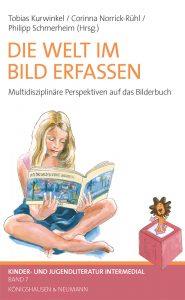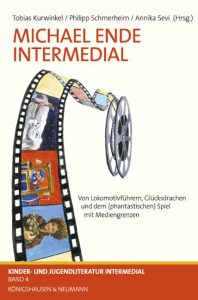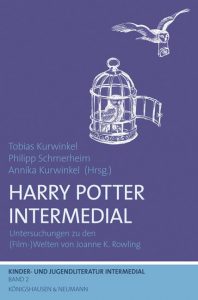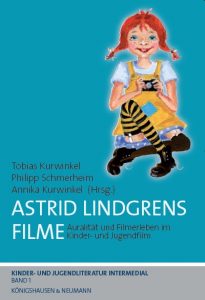Together with Tobias Kurwinkel and Annika Sevi, I am the co-founder and co-editor of the book series „Kinder- und Jugendliteratur Intermedial“. The volumes, which are edited by various children’s literature and media researchers, focus on aspects of the intermediality of children’s literature, with a special emphasis on film. All books are published with the publishing house „Königshausen & Neumann“. As of 2016, four volumes have been published, two more are in preparation. Below you can find the books I have co-edited. In-depth descriptions can be found on www.kinderundjugendliteraturintermedial.de.
| 2020 | |
 |
|
|
Die Welt im Bild erfassen: Multidisziplinäre Perspektiven auf das Bilderbuch. Das Bilderbuch ist ein Laboratorium des erzählerisch-ästhetischen Ausdrucks von Welterfahrung und hat als solches in den vergangenen Jahren tiefgreifende Entwicklungen durchlaufen. Die Beiträge dieses Sammelbands reflektieren multidisziplinär Produktion, Distribution und Rezeption von Bilderbüchern, untersuchen Wechselwirkungen mit anderen Ausdrucksmedien, eruieren didaktische Potenziale des Bilderbuchs und erproben analytische Zugänge. Abgerundet wird der Band durch Praxisbeiträge, die den Alltag im Lektorat sowie die aktuelle Kinderliteraturkritik reflektieren. |
|
| 2016 | |
 |
|
|
Michael Ende Intermedial. Von Lokomotivführern, Glücksdrachen und dem (phantastischen) Spiel mit Mediengrenzen Michael Ende and the media: That is an ambiguous story, but also a story of a successful relationship, of a playful exchange between literature and film, painting, audio books, picture books, and theatre. Not only have Ende’s stories been adapted for several media, his own work also reflects his intermedial approach, which takes into account the expressive potentiae of other art forms. In this, Ende’s work is a continuation of his life: He did not only write books but also worked as a theatre actor, dramatic advisor, film and theatre critic, poet as well as illustrator. |
|
| 2014 | |
 |
|
|
Harry Potter Intermedial. Untersuchungen zu den (Film-)Welten von Joanne Rowling The unprecedent success of J.K. Rowling’s Harry Potter books has been amplified by the eight film adaptations and a faithful internet-based fan following that turned the adventures of the sorcerer’s apprentice into a veritable cultural phenomenon. |
|
| 2012 | |
 |
|
|
Astrid Lindgrens Filme. Auralität und Filmerleben im Kinder- und Jugendfilm Astrid Lindgren’s stories owe their long-lasting popularity in part to the film adaptations of the 1960s to 1980s: For millions of children, Inger Nilsson, this freckled little girl in red pigtails, is the quintessential Pippi Longstockings, and Jan Ohlsson is the perfect embodiment of the little blond prankster Emil of Lönneberga. |
